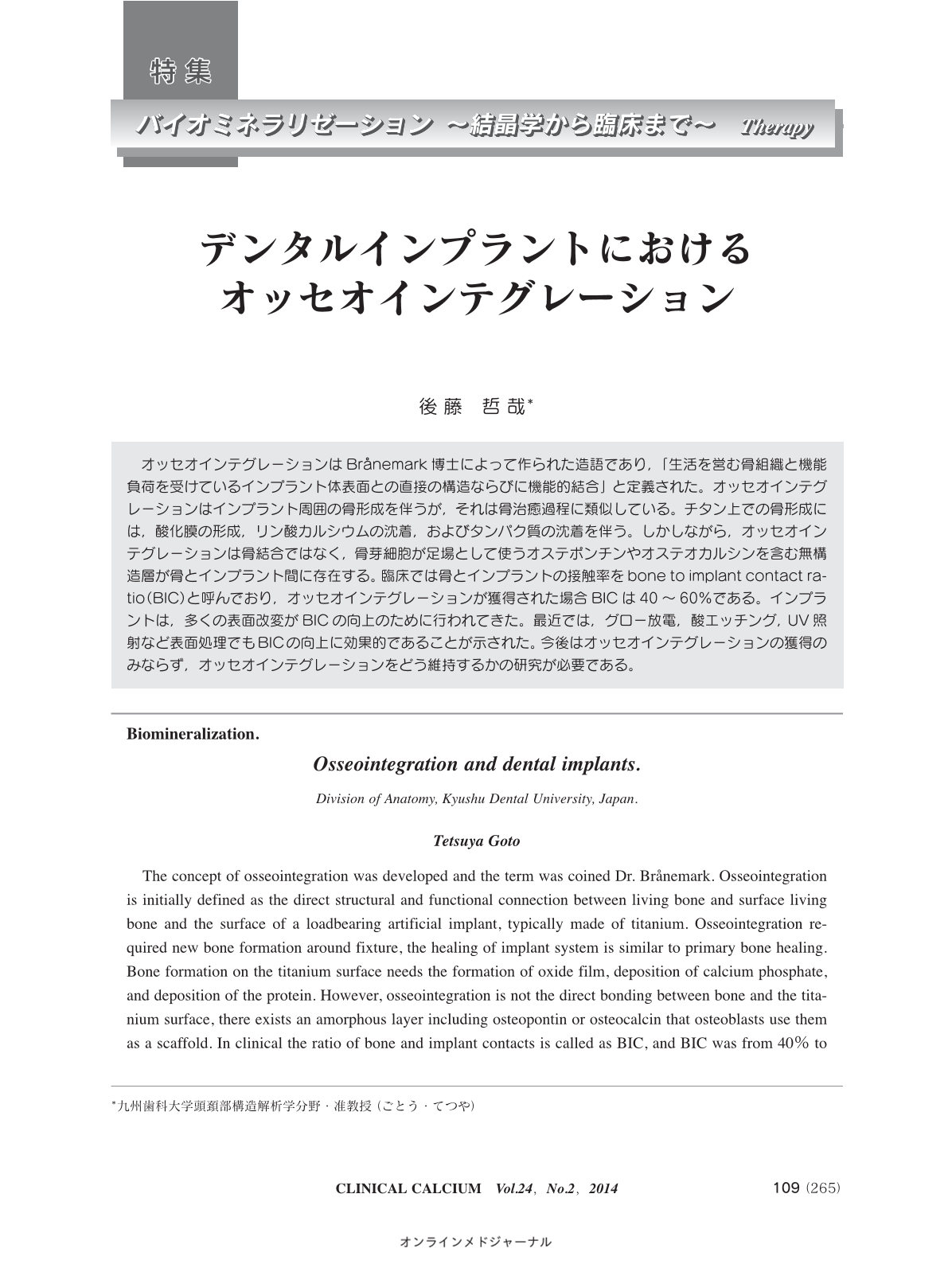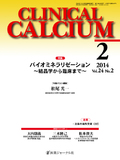Japanese
English
- 有料閲覧
- Abstract 文献概要
- 1ページ目 Look Inside
- 参考文献 Reference
オッセオインテグレーションはBrånemark博士によって作られた造語であり,「生活を営む骨組織と機能負荷を受けているインプラント体表面との直接の構造ならびに機能的結合」と定義された。オッセオインテグレーションはインプラント周囲の骨形成を伴うが,それは骨治癒過程に類似している。チタン上での骨形成には,酸化膜の形成,リン酸カルシウムの沈着,およびタンパク質の沈着を伴う。しかしながら,オッセオインテグレーションは骨結合ではなく,骨芽細胞が足場として使うオステポンチンやオステオカルシンを含む無構造層が骨とインプラント間に存在する。臨床では骨とインプラントの接触率をbone to implant contact ratio(BIC)と呼んでおり,オッセオインテグレーションが獲得された場合BICは40~60%である。インプラントは,多くの表面改変がBICの向上のために行われてきた。最近では,グロー放電,酸エッチング,UV照射など表面処理でもBICの向上に効果的であることが示された。今後はオッセオインテグレーションの獲得のみならず,オッセオインテグレーションをどう維持するかの研究が必要である。
The concept of osseointegration was developed and the term was coined Dr. Brånemark. Osseointegration is initially defined as the direct structural and functional connection between living bone and surface living bone and the surface of a loadbearing artificial implant, typically made of titanium. Osseointegration required new bone formation around fixture, the healing of implant system is similar to primary bone healing. Bone formation on the titanium surface needs the formation of oxide film, deposition of calcium phosphate, and deposition of the protein. However, osseointegration is not the direct bonding between bone and the titanium surface, there exists an amorphous layer including osteopontin or osteocalcin that osteoblasts use them as a scaffold. In clinical the ratio of bone and implant contacts is called as BIC, and BIC was from 40% to 60% if the osseointegration was obtained. Numerous studies were performed for the surface modification to increase the score of BIC. Recently, surface treatments such as glow discharge, acid-etch, or UV irradiation have been found to be effective for osseointegration. Further modification would be needed to maintain the osseointegration as well as to obtain the osseointegration.



